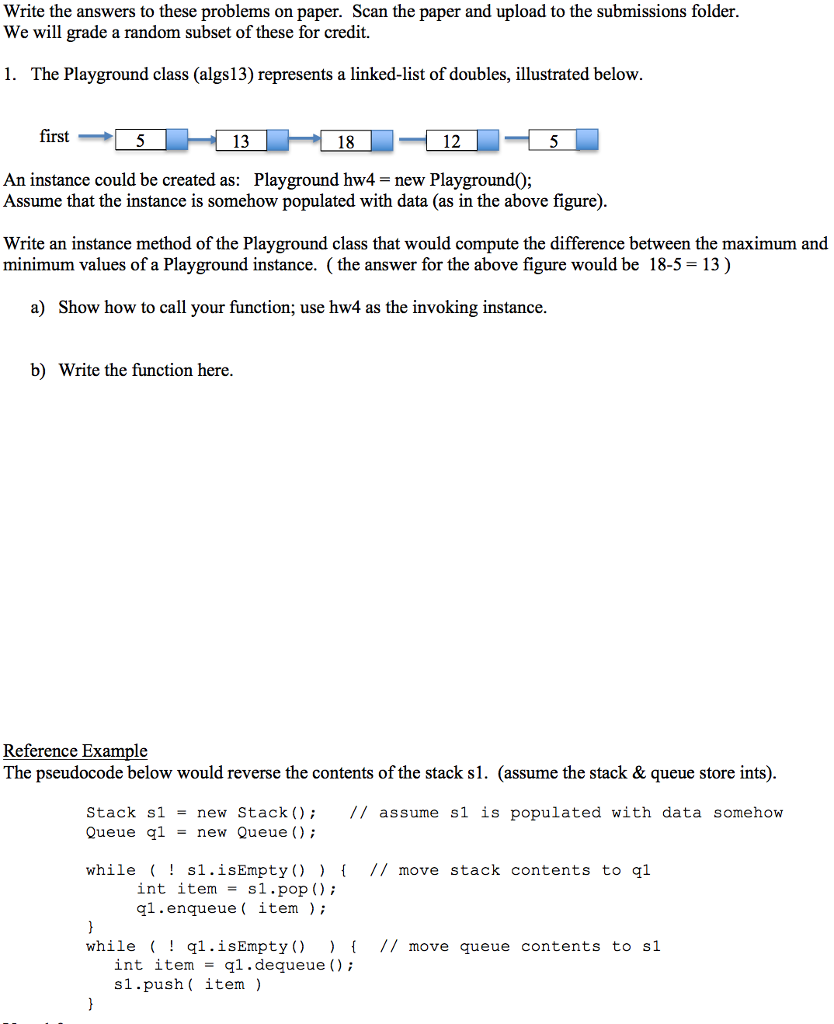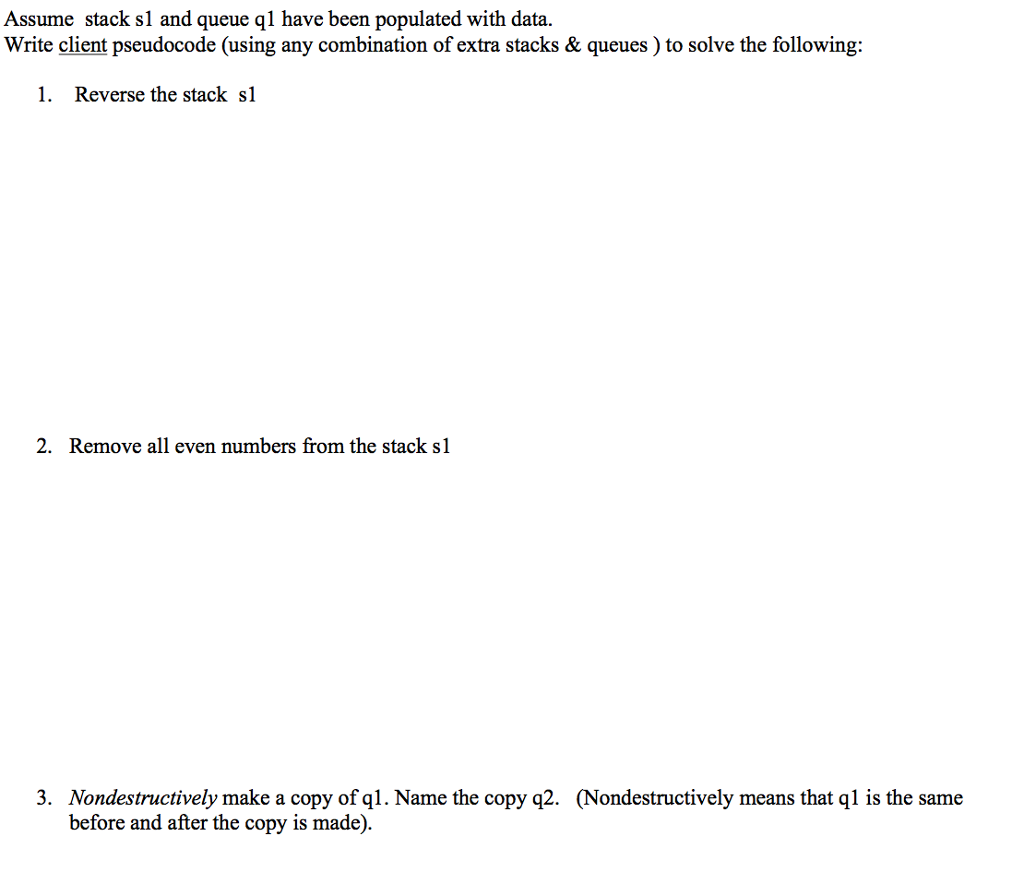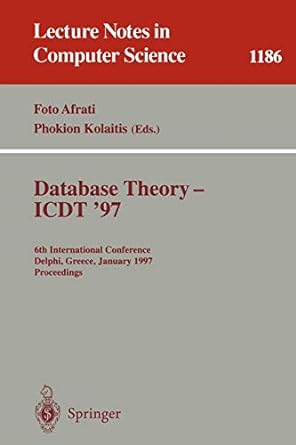Question
In Java please. Playground class below package algs13; import java.text.DecimalFormat; import stdlib.*; public class Playground { private Node first; static class Node { public double
In Java please. Playground class below

package algs13;
import java.text.DecimalFormat;
import stdlib.*;
public class Playground {
private Node first;
static class Node {
public double item;
public Node next;
public Node (double item, Node next) {
this.item = item;
this.next = next;
}
}
public int numFives () {
return StdRandom.uniform (100); //TODO: fix this
}
/* ToString method to print */
public String toString () {
// Use DecimalFormat #.### rather than String.format 0.3f to leave off trailing zeroes
DecimalFormat format = new DecimalFormat ("#.###");
StringBuilder result = new StringBuilder ("[ ");
for (Node x = first; x != null; x = x.next) {
result.append (format.format (x.item));
result.append (" ");
}
result.append ("]");
return result.toString ();
}
/* Method to create lists */
public static Playground of(String s) {
Node first = null;
String[] nums = s.split (" ");
for (int i = nums.length-1; i >= 0; i--) {
try {
double num = Double.parseDouble (nums[i]);
first = new Node (num, first);
} catch (NumberFormatException e) {
// ignore anything that is not a double
}
}
Playground result = new Playground ();
result.first = first;
return result;
}
/* A silly method to show list creation */
public static Playground example(int i) {
Node x1 = new Node (i+10, null);
Node x2 = new Node (i+20, null);
Node x3 = new Node (i+30, null);
Node x4 = new Node (i+40, null);
Playground result = new Playground ();
result.first = x1;
x1.next = x2;
x2.next = x3;
x3.next = x4;
return result;
}
public static void main (String[] args) {
Trace.drawSteps ();
Trace.run ();
Playground example1 = Playground.example (1);
Playground example2 = Playground.example (5);
Playground example3 = Playground.example (7);
}
public static void testNumFives (int expected, String sList) {
Playground list = Playground.of (sList);
int actual = list.numFives ();
if (expected != actual) {
StdOut.format ("Failed: Expecting [%d] Actual [%d] with argument %s ", expected, actual, list);
}
}
public static void main1 (String[] args) {
testNumFives (0, "");
testNumFives (1, "5");
testNumFives (0, "11");
testNumFives (3, "5 5 5");
testNumFives (0, "11 21 31 41");
testNumFives (1, "5 11 21 31 41");
testNumFives (1, "11 21 31 41 5");
testNumFives (1, "11 21 5 31 41");
testNumFives (5, "5 11 21 5 5 31 5 41 5");
StdOut.println ("Finished tests");
}
public static void main2 (String[] args) {
Trace.drawStepsOfMethod ("numFives");
Trace.drawStepsOfMethod ("numFivesH");
Trace.run ();
//Playground list0 = Playground.of ("5");
Playground list1 = Playground.of ("5 11 5 5");
//Playground list2 = Playground.of ("24 35 67");
int result1 = list1.numFives ();
StdOut.println ("result: " + result1);
}
}
Write the answers to these problems on paper. Scan the paper and upload to the submissions folder. We will grade a random subset of these for credit 1. The Playground class (algs13) represents a linked-list of doubles, illustrated below. 13 18 12 An instance could be created as: Playground hw4-new Playground0; Assume that the instance is somehow populated with data (as in the above figure) Write an instance method of the Playground class that would compute the difference between the maximum and minimum values of a Playground instance. ( the answer for the above figure would be 18-5-13) a) Show how to call your function; use hw4 as the invoking instance b) Write the function here Reference Example The pseudocode below would reverse the contents of the stack s1. (assume the stack & queue store ints) Stack s1-new Stack // assume sl is populated with data somehow Queue qlnew Queue ) while! s1.isEmpty)t I/ move stack contents to ql int item-s1.pop gl.enqueue ( item while! ql.isEmpty // move queue contents to si int itemql.dequeue s1.push ( item) Write the answers to these problems on paper. Scan the paper and upload to the submissions folder. We will grade a random subset of these for credit 1. The Playground class (algs13) represents a linked-list of doubles, illustrated below. 13 18 12 An instance could be created as: Playground hw4-new Playground0; Assume that the instance is somehow populated with data (as in the above figure) Write an instance method of the Playground class that would compute the difference between the maximum and minimum values of a Playground instance. ( the answer for the above figure would be 18-5-13) a) Show how to call your function; use hw4 as the invoking instance b) Write the function here Reference Example The pseudocode below would reverse the contents of the stack s1. (assume the stack & queue store ints) Stack s1-new Stack // assume sl is populated with data somehow Queue qlnew Queue ) while! s1.isEmpty)t I/ move stack contents to ql int item-s1.pop gl.enqueue ( item while! ql.isEmpty // move queue contents to si int itemql.dequeue s1.push ( item)Step by Step Solution
There are 3 Steps involved in it
Step: 1

Get Instant Access to Expert-Tailored Solutions
See step-by-step solutions with expert insights and AI powered tools for academic success
Step: 2

Step: 3

Ace Your Homework with AI
Get the answers you need in no time with our AI-driven, step-by-step assistance
Get Started


